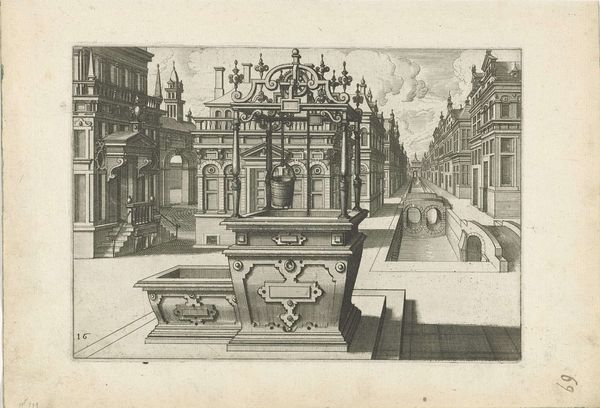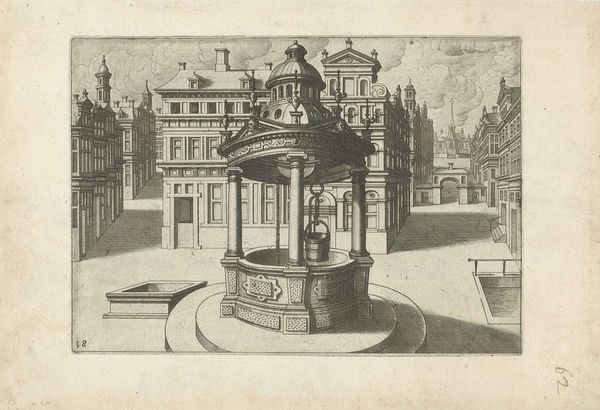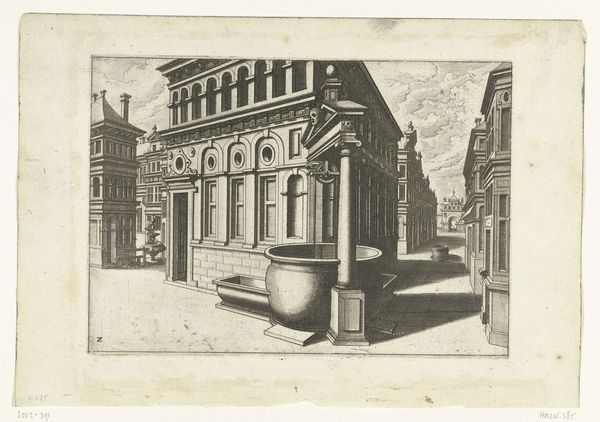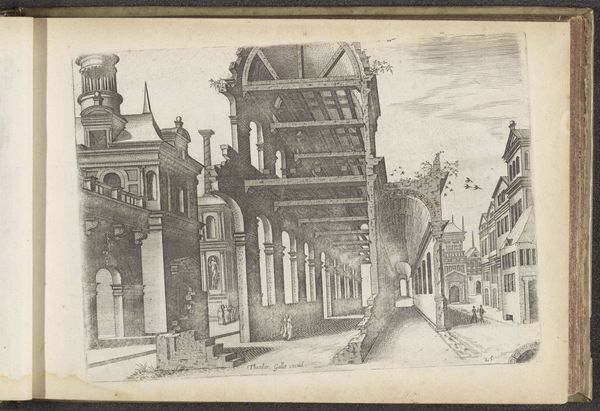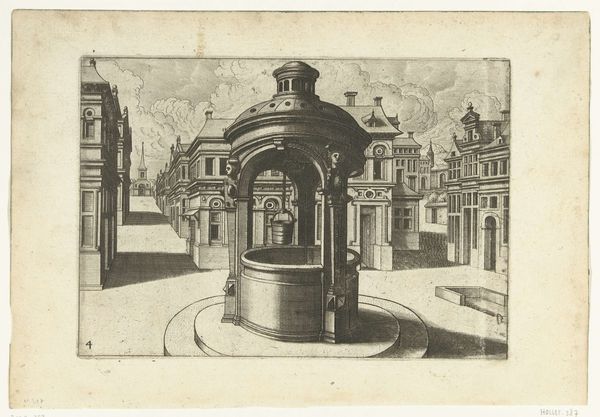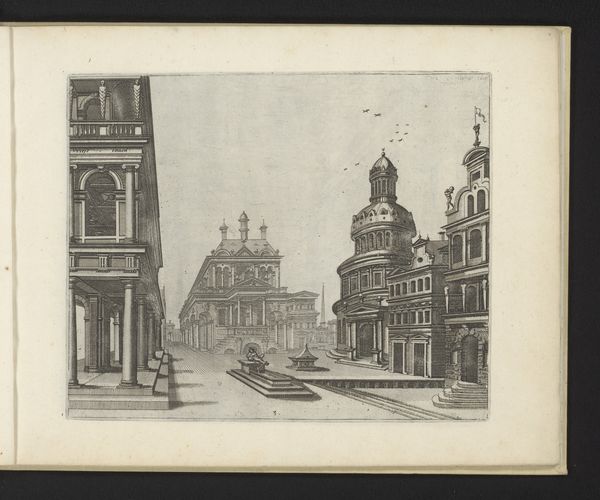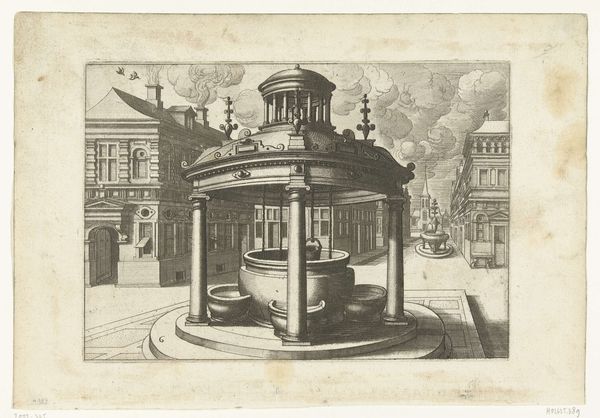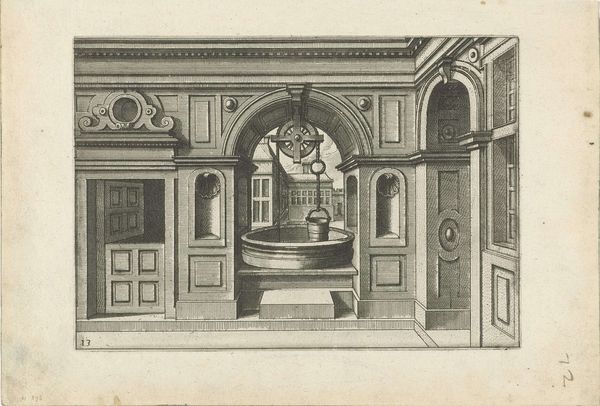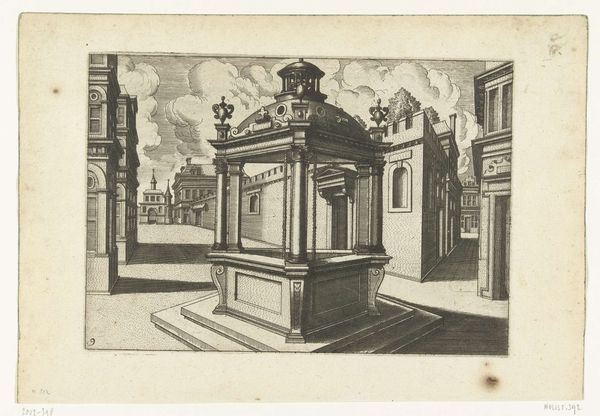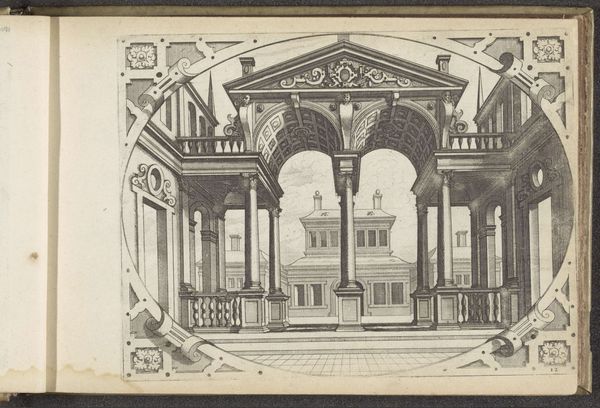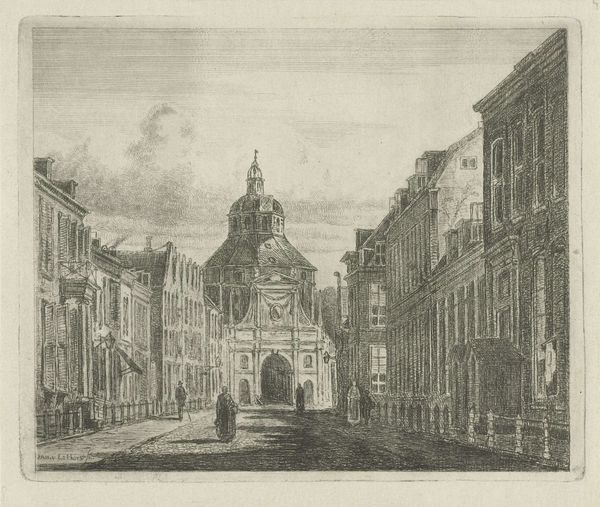
Waterput met twee lagere langwerpige waterbassins c. 1574
0:00
0:00
print, engraving
# print
#
old engraving style
#
11_renaissance
#
cityscape
#
engraving
Dimensions: height 143 mm, width 203 mm
Copyright: Rijks Museum: Open Domain
Editor: This is "Waterput met twee lagere langwerpige waterbassins," a print by Johannes or Lucas van Doetechum, dating from around 1574. The precision of the lines depicting this urban well scene is striking. How might we understand this engraving beyond just its visual representation? Curator: Well, let's think about the materiality of the print itself. It’s an engraving, which involves a very particular kind of labor, incising lines into a metal plate. What does that suggest about the value placed on reproducible imagery in the late Renaissance? The creation and distribution implies a market, a consumption of images beyond unique paintings or sculptures. Editor: So it’s not just the well itself but the *means* of depicting the well that's important? How so? Curator: Exactly. Consider the purpose of a well – access to water, a vital resource, right? Now look at how this scene is distributed: an easily reproducible format. This suggests not only the necessity of the well, but also an accessible portrayal of civic infrastructure. It’s almost like a manual for ideal city planning made available through print. It prompts us to consider the role of printmaking as an accessible medium – perhaps a reflection on broader societal values around accessible resources. Does that shift your initial reaction at all? Editor: Definitely. Seeing it as part of a larger network of production and consumption opens up a whole new layer of interpretation. It’s not just a picture; it's a product with its own story about society, labor, and materials. Curator: And how the distribution of the image could democratize, in a way, ideals and aspirations. A single image can unpack the relationship between people, their work, and the very fabric of their material lives.
Comments
No comments
Be the first to comment and join the conversation on the ultimate creative platform.
